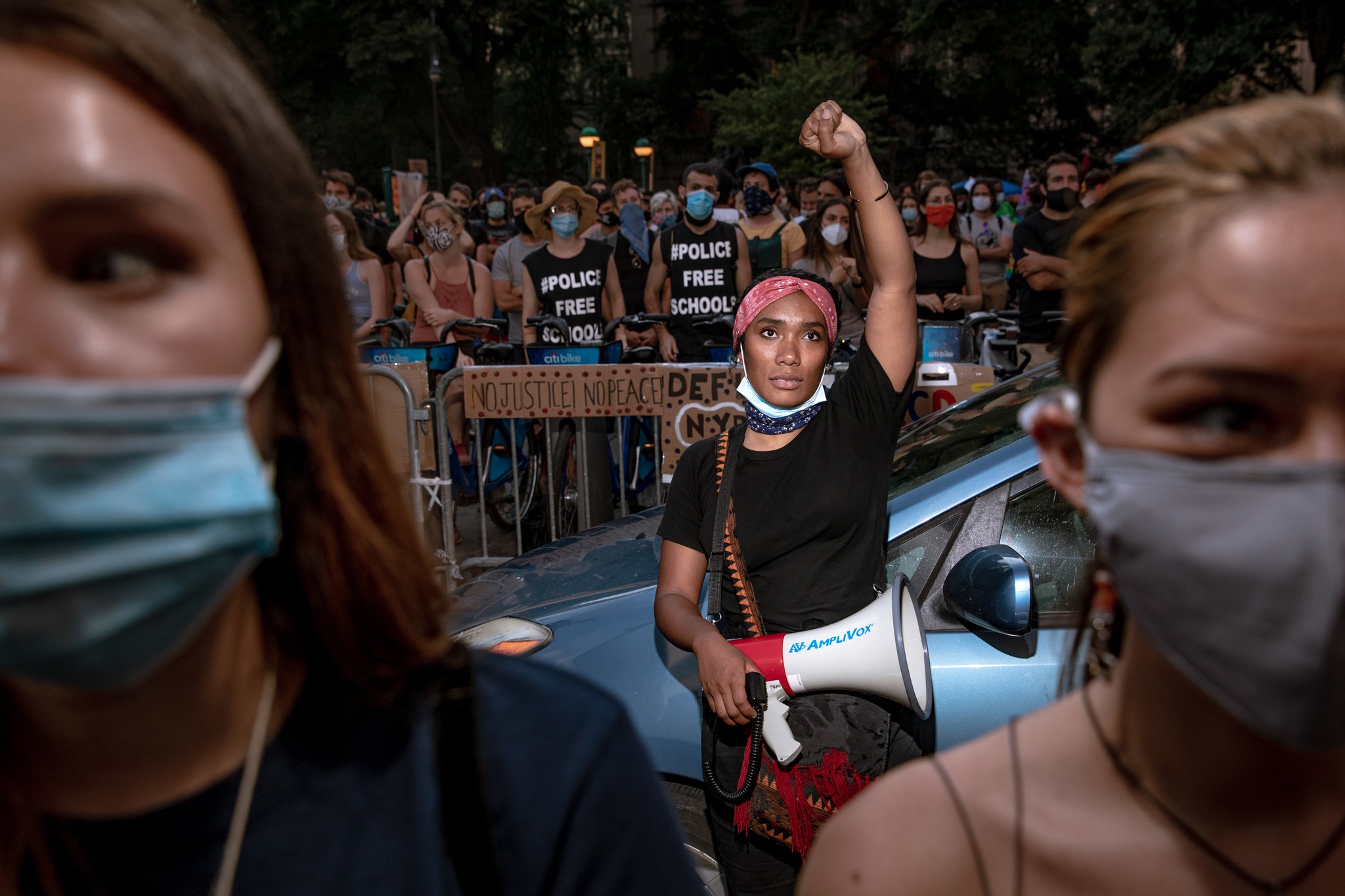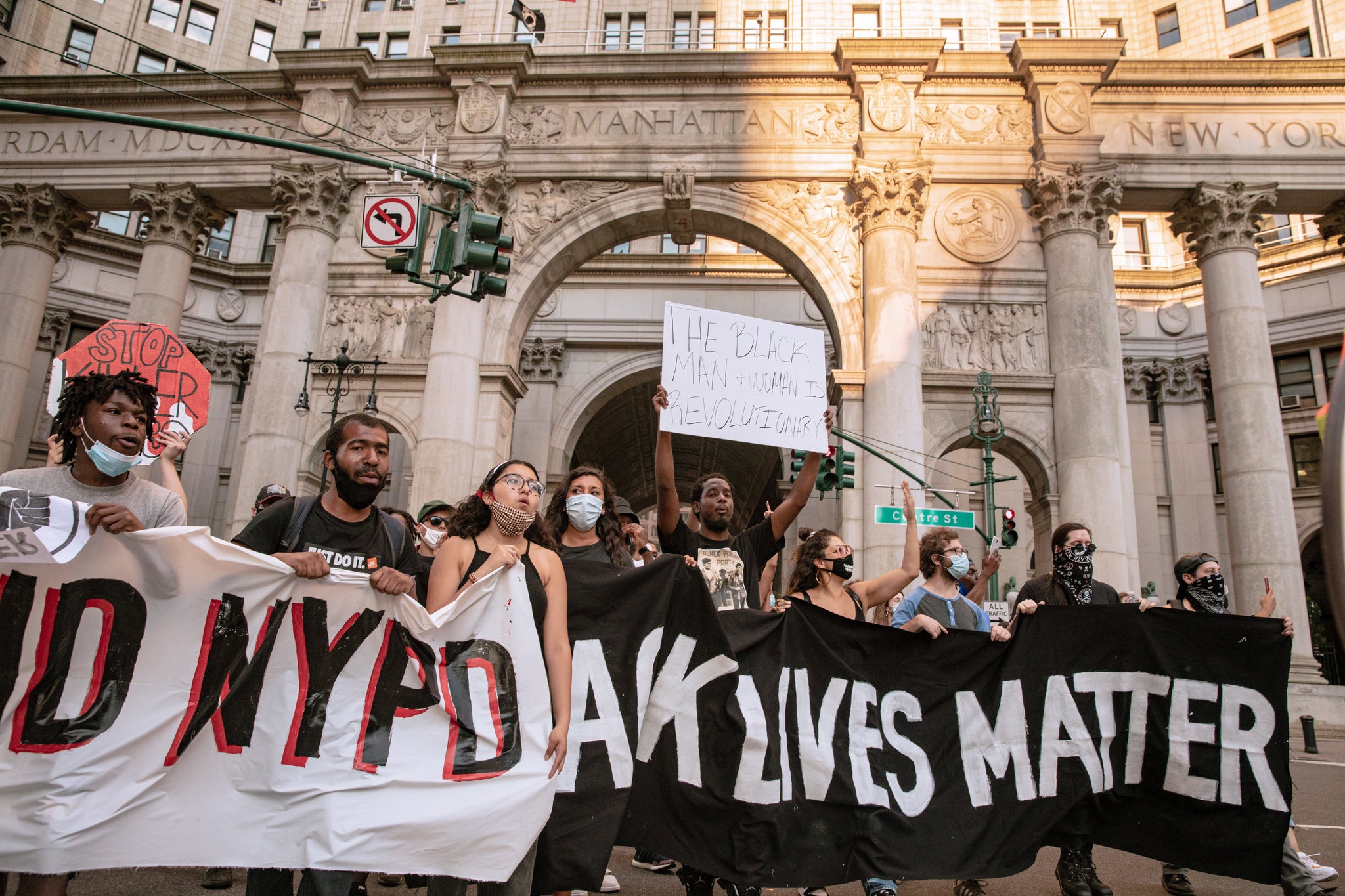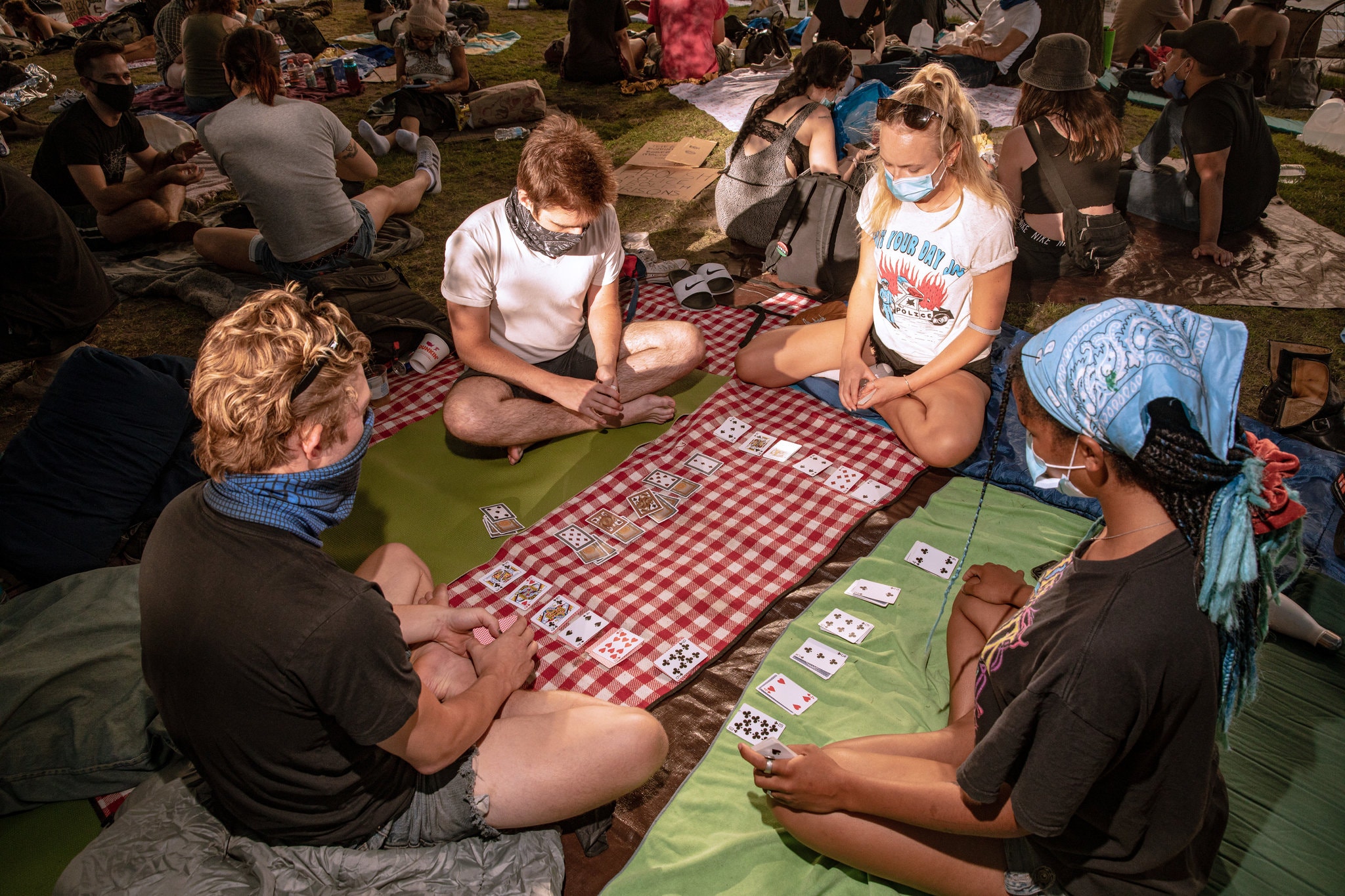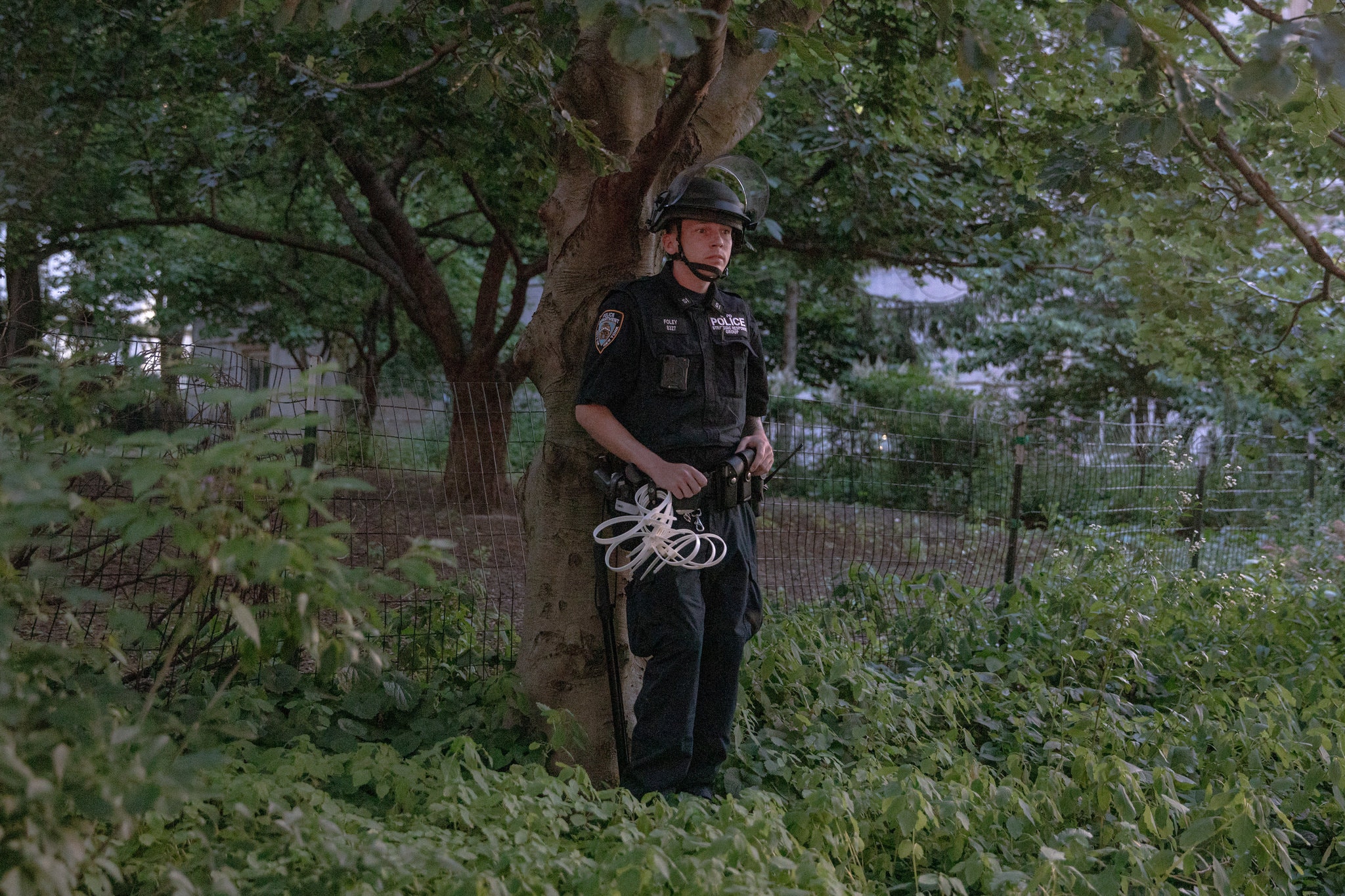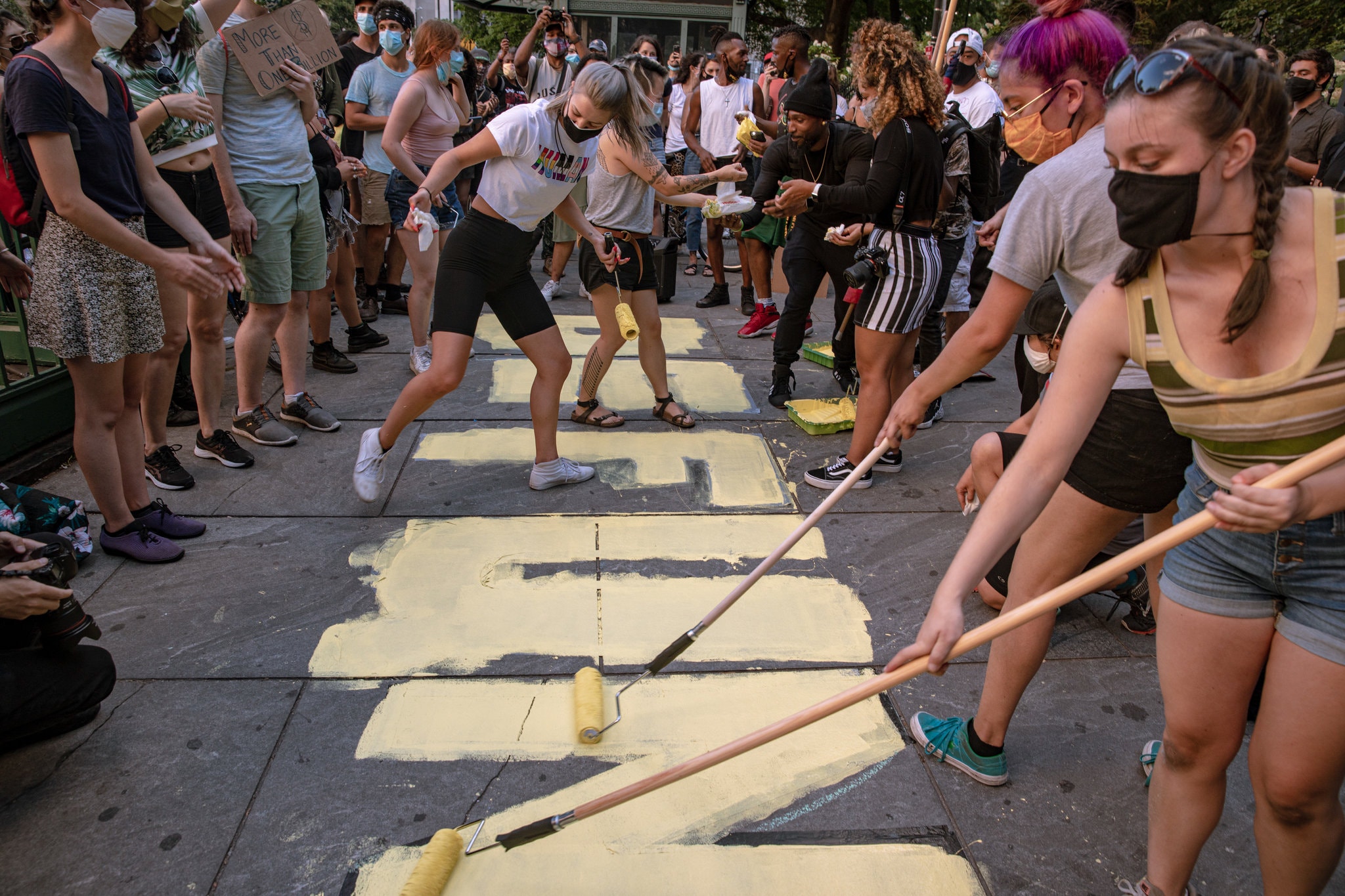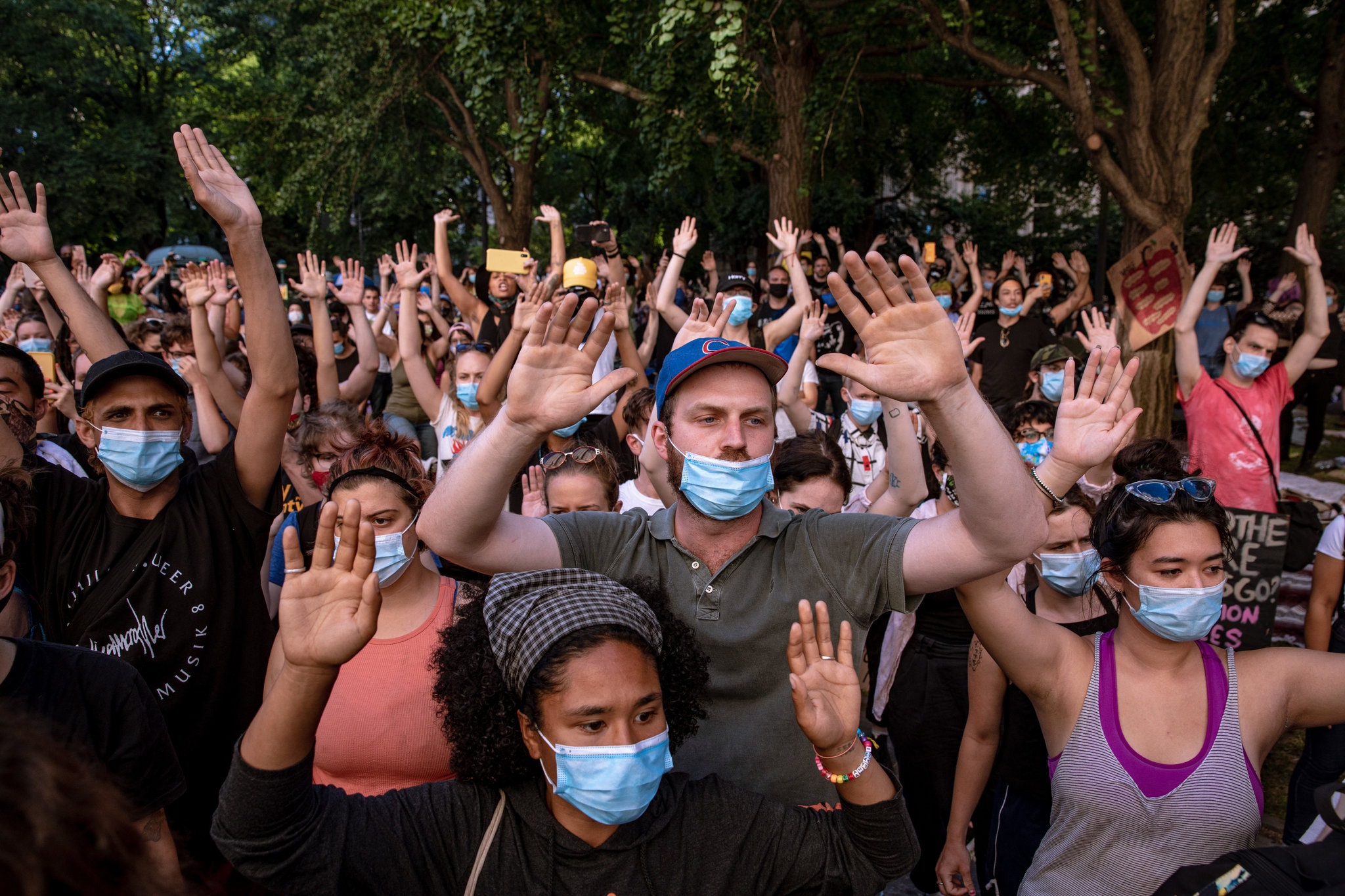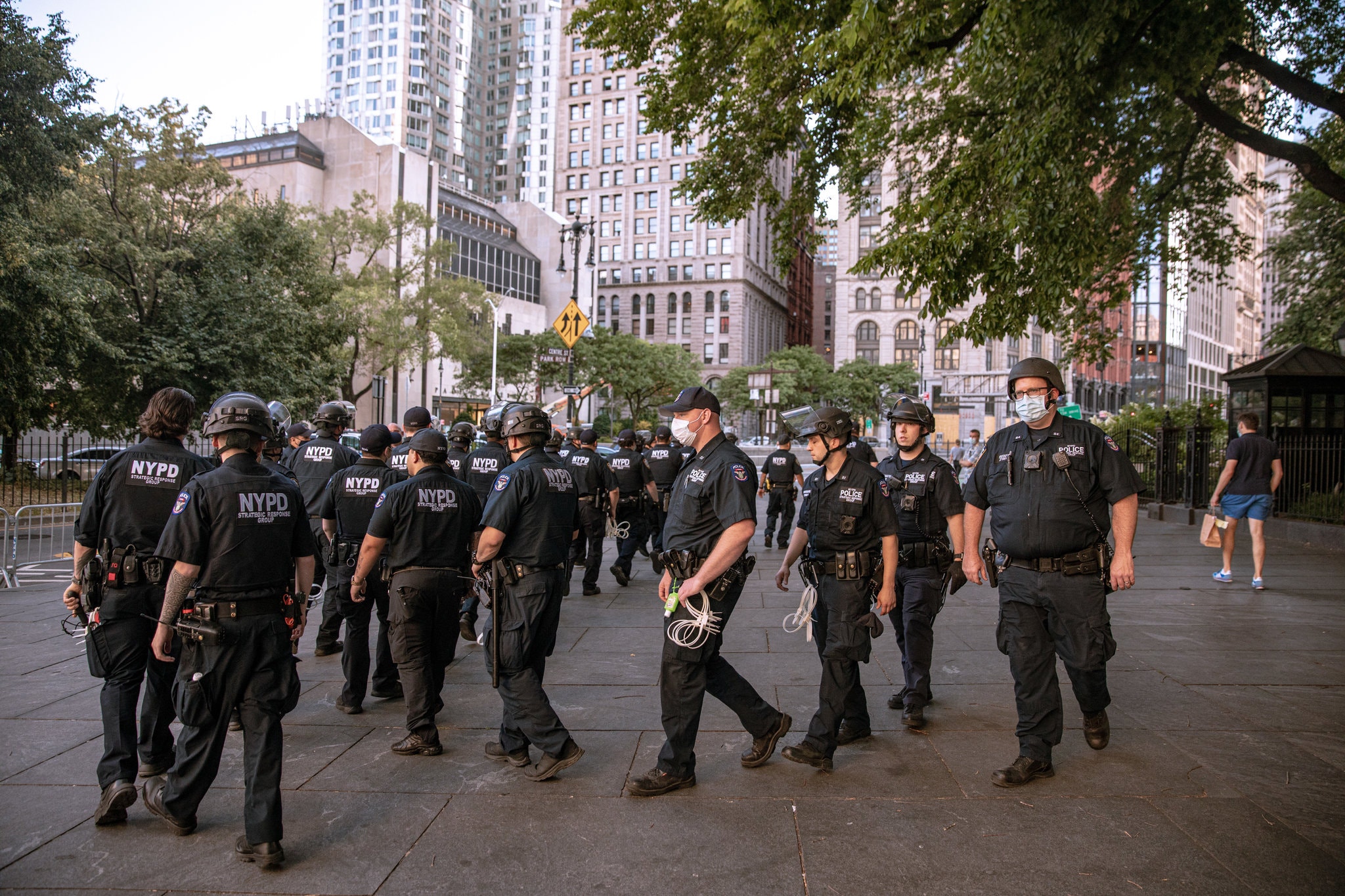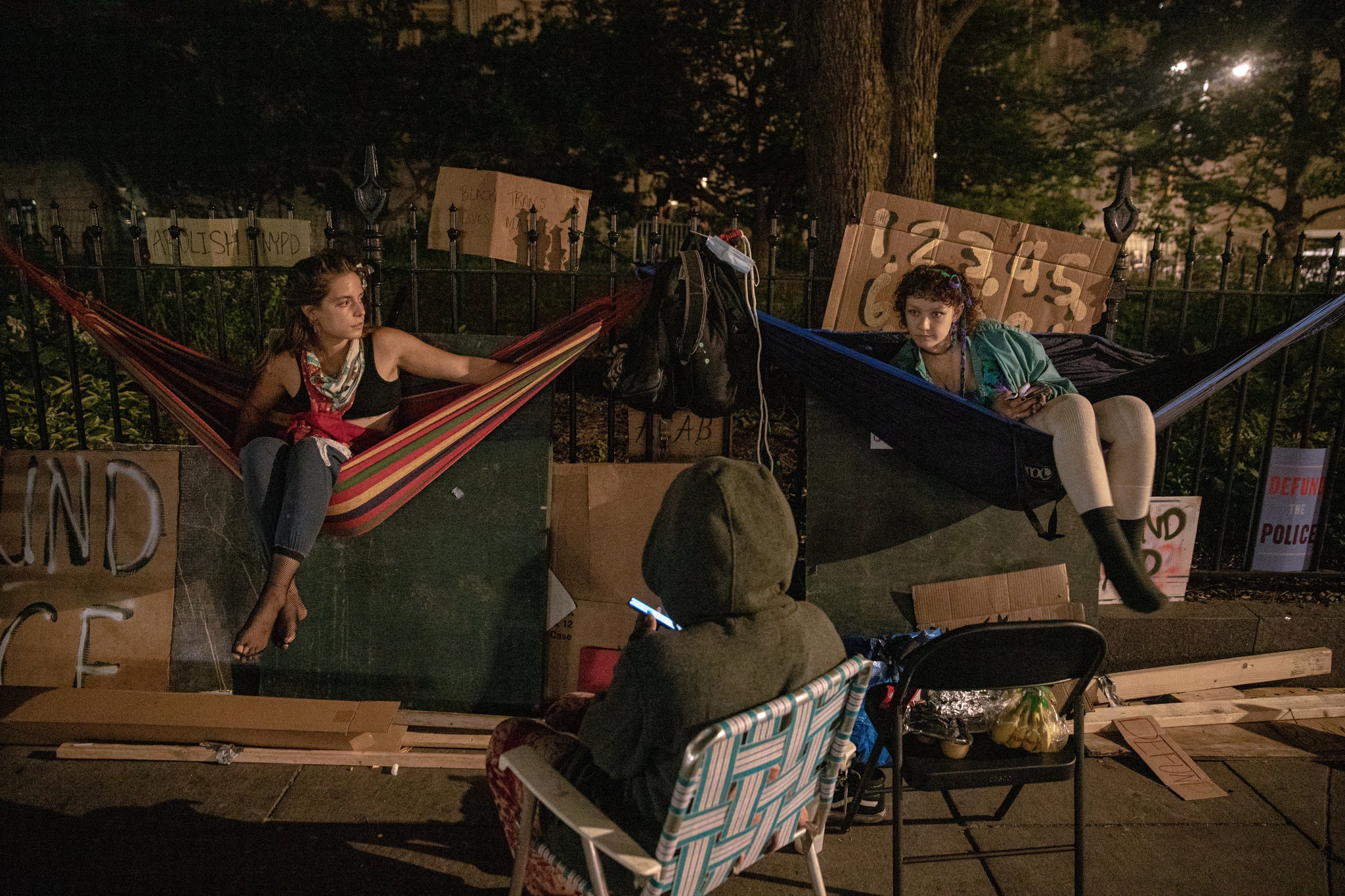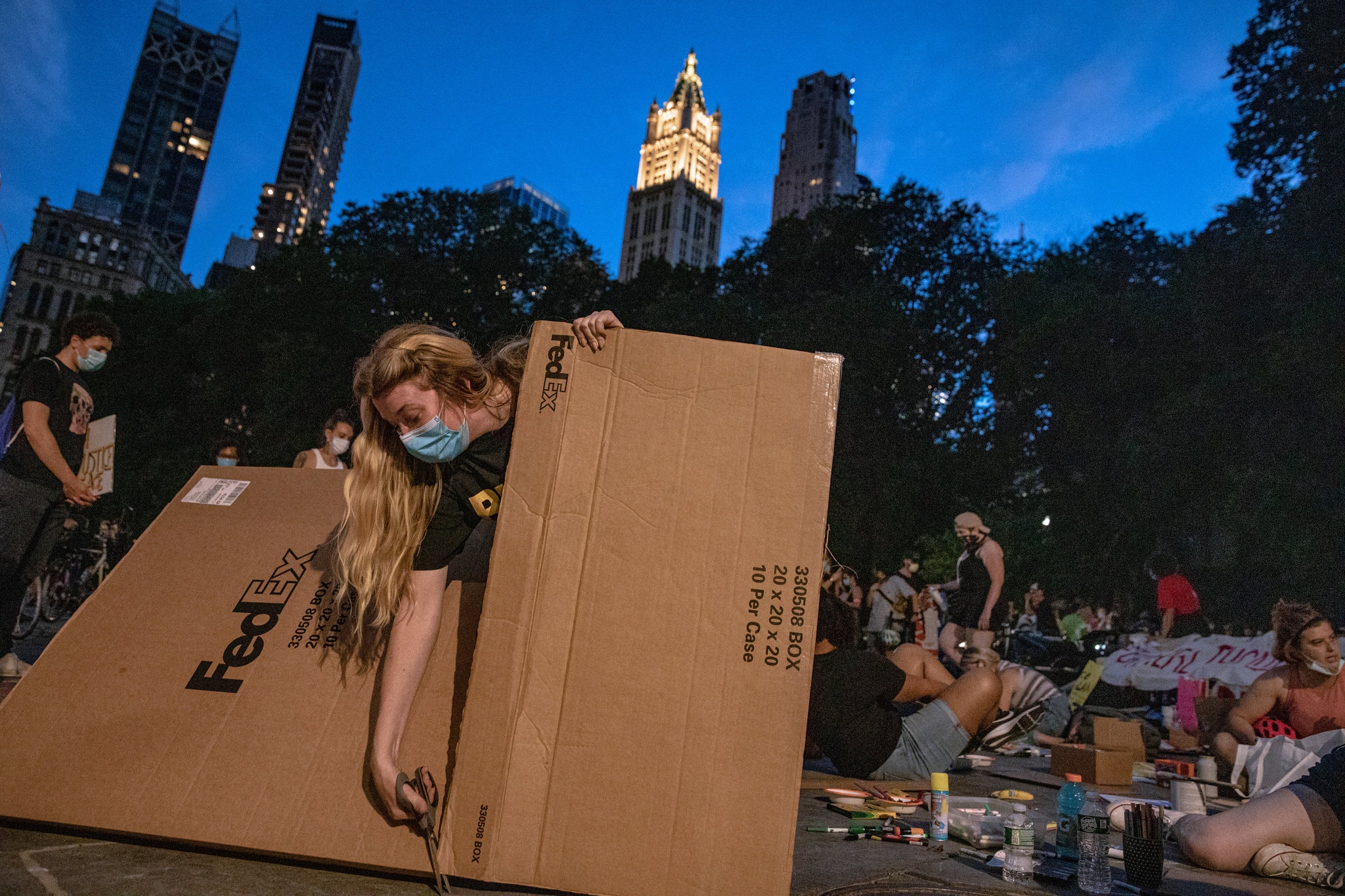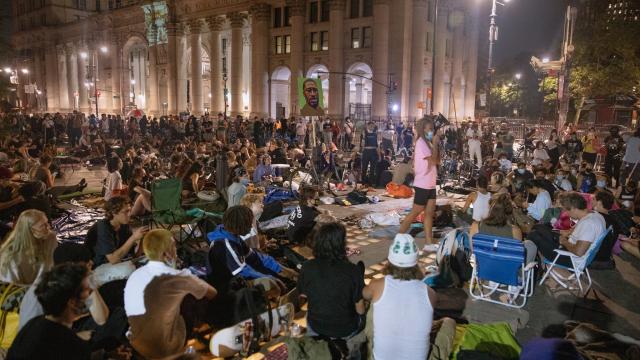
For almost a week, protesters have gathered in front of City Hall, many of them spending the night.
It started on Tuesday night when about 100 protesters began occupying City Hall Park in Lower Manhattan — with some spending the night — in an effort to draw more focus to their demand for deep budget cuts to the Police Department.
In a matter of days, a movement took root. What started on a patch of lawn and a few square feet has now taken over most of the park and drawn extensive attention across social media, with “Occupy City Hall” as the group’s rallying cry. Volunteers have flocked to the park, dropping off food, coffee and supplies to build a kind of campground.
So far, the police have not broken up the gathering, which has taken some inspiration from the Occupy Wall Street demonstrations of 2011 at Zuccotti Park in the financial district in Lower Manhattan. But some disagreements have resulted between protesters and the police over the use of umbrellas, tents and bicycles.
The City Hall encampment, which was initially spearheaded by Vocal-NY, a grass-roots organization, is the latest addition to the wave of protests in New York after George Floyd’s death at the hands of Minneapolis police in late May.
Jawanza James Williams, director of organizing for Vocal-NY, conceptualized the occupation as a way to pressure the city into reducing its police budget by at least $1 billion, a sum the group has asked to be shifted to other resources, including education and social services.
The protesters, who are part of a movement to defund the police, are focusing on the July 1 deadline for the city’s budget.
Corey Johnson, speaker of the City Council, which must approve the budget, has called for a $1 billion reduction in the $6 billion that the city spends on the Police Department, but Mayor Bill de Blasio has not endorsed such a cut.
“We can’t leave anything to chance,” said Mr. Williams, who refers to “Occupy City Hall” as “a people’s bazaar for liberation.”
In a short time, organizers, largely black and queer, have transformed the plaza. Hand-drawn art covers any semblance of government infrastructure: subway entrances, metal barricades and kiosks — a sharp contrast to the limestone municipal building across the street.
A sophisticated network was created to make the space habitable. Organizers built a library, community garden and even a hut for tea lovers. They gathered donations of prepared meals, water, hand sanitizer, blankets, vitamins and cigarettes. And they formed elaborate teams for safety, sanitation and food distribution.
Orange armbands distinguish the de-escalation team from the medics, who wear a red cross emblem made from electric tape. By Saturday, organizers had installed internet service and set up a laundry schedule.
As the movement expands, tensions over strategy have emerged, especially over whether Vocal-NY is demanding deep enough cuts in the budget.
Some supporters of the movement to defund the police have expressed discomfort over the number of young, white people who are taking part in the gathering, as well as over an atmosphere that is occasionally upbeat.
Organizers responded that the movement’s ability to accommodate a diverse range of opinion was a sign of success.
The threat of the coronavirus also looms over the gathering. During peak hours, it’s impossible for protesters to socially distance. Thousands are elbow-to-elbow at the plaza even as the occupation sprawls farther south. At night, protesters still cluster at the lawn, sleeping with masks on. Others unroll their sleeping bags and tarps farther out when it’s time to call it a night.
The encampment is run by a combination of veteran organizers and first-time volunteers.
Sierra Nicole, 23, from West Harlem, didn’t think she would end up overseeing the welcome desk when she first arrived on Thursday afternoon. On that first day, Ms. Nicole had gone straight to that desk to get more information, but when she noticed a volunteer who appeared tired, she offered to take his place. He agreed.
A few hours later, a protester walked up to Ms. Nicole eager to volunteer. The next available slot was in eight hours, at 3 a.m., but the protester, a woman, didn’t seem to mind. Ms. Nicole signed her up.
Many volunteers work around the clock. At 4 a.m. on Friday, Gregory Lecrocq, 31, from the Upper East Side, began his shift at the food station, making breakfast sandwiches for early risers. Since volunteering, he sleeps from 8 a.m. to 3 p.m. By 4 p.m., he’s usually back at the protest.
Occupy has also become a meeting point for other marches. Protesters from Upper Manhattan and Brooklyn have stopped by to show their support as well as to pick up food and water.
Some protesters have said they plan to remain at the plaza beyond the budget deadline day, until their demands for systemic change are met. Mr. Williams said he’s not opposed to people staying longer.
Either way, Vocal-NY members said they were optimistic that they had organized a movement that could sustain itself in the long-term, said Jasmine Budnella, 34, the group’s drug policy coordinator.
Still, as the week has progressed, organizers said they had grappled with setting the right tone. While showing joy is an important form of resistance, Mr. Williams said, the group doesn’t want people to forget why they’ve gathered. At times, the occupation can appear festival-like. But those moments are often followed by a speaker stressing the need to stay alert and vigilant.
“We’re here because black people are dying in the street,” one speaker told the crowd on Thursday night. “We’re not here to socialize, we’re here for real-life problems.”
Many protesters said they had committed to sleeping outside every night until the end of the month, noting that they have everything they need to survive: food, water, clothes, a place to shower and restrooms.
Others said they would try to show up every other night. Those who didn’t want to sleep outside said they would volunteer from sunrise to sundown.
Organizers said the movement’s ethos is centered around anti-consumerism, inclusivity and camaraderie. Everything is free-of-charge, and protesters are constantly on the lookout for one another. Making the encampment a safe space for vulnerable communities has also been a top priority, they said.
On Thursday evening, Moji Armu and her two children — ages 6 and 9 — stumbled upon the demonstration on their way home.
Ms. Armu said she had thought about bringing her children to protests in the past but that they had become frightened to do so after seeing images on television of protesters clashing with the police. But on Thursday, her children noticed an art-making station at the Occupy gathering and ran to the tray of paint tubes.
A little later, she said her 6-year-old son paused in bewilderment. He didn’t realize that what he had been witnessing — the art making, dancing — could be considered protesting.
He asked his mother if he had just attended his first protest. She smiled and said, “You sure did.”
Originally published by The New York Times

